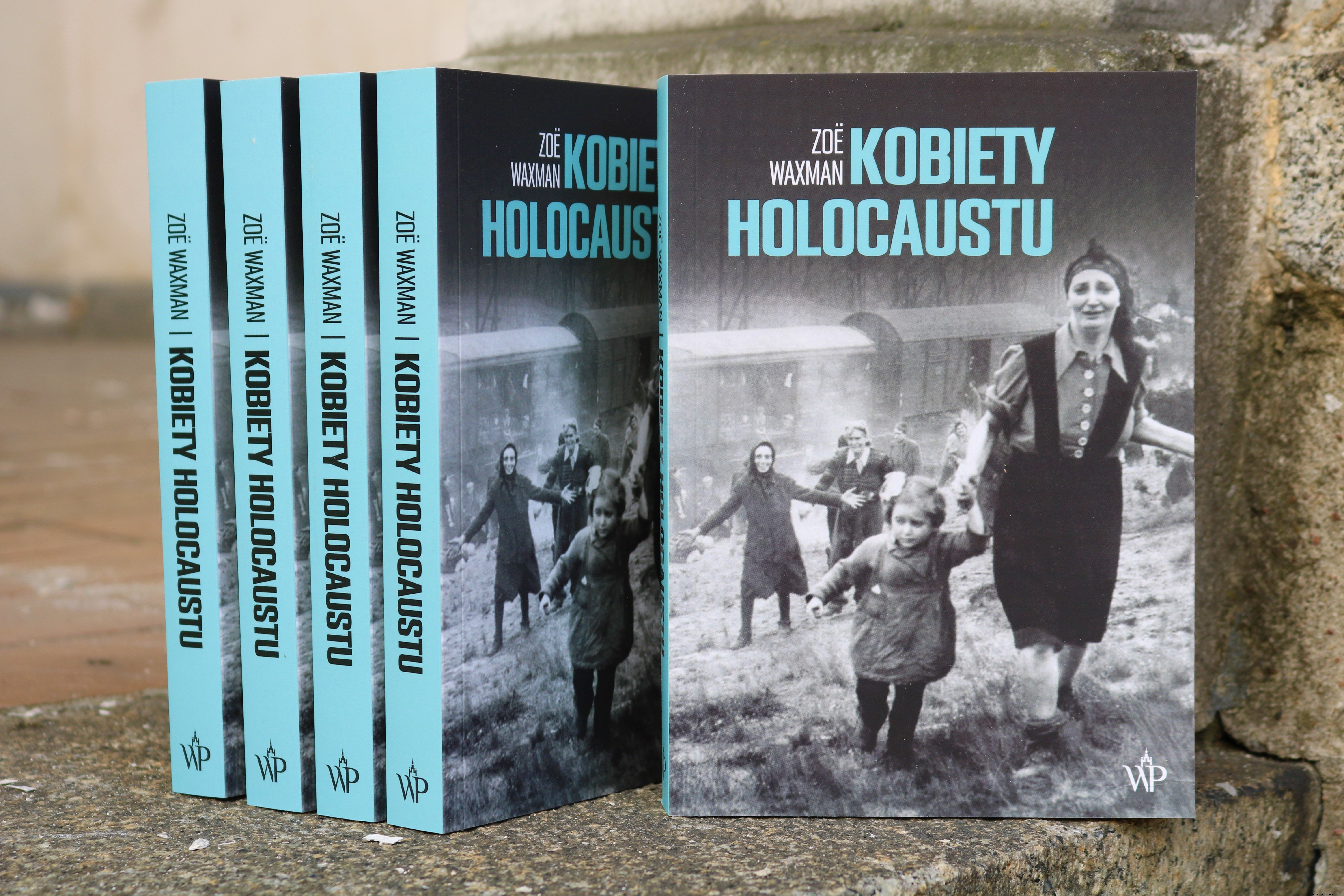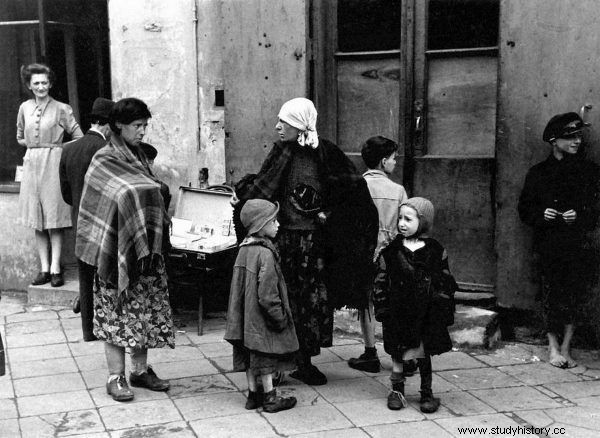Women killed babies and hid their bodies to get an extra ration of bread. Their parents sent older children to the street to beg for food and money. Girls were often forced into prostitution. Only one thing mattered in the ghetto:survive. Even at the expense of my own children…
In concentration camps, the Germans introduced a simple selection rule - all prisoners under the age of 16, and in 1944 - 14, were directed straight to the gas chambers. It is estimated that German Nazis and collaborators murdered up to 1.5 million children of Jewish origin during the war.
However, this number could be greater. Tens of thousands of children did not end up in the camps at all. Some managed to save themselves. Others had been murdered earlier. Not by the Germans, but by ... their own mothers.
Tender card
Having a child in the ghetto was a deadly threat. Not only because of the lack of basic medications, widespread epidemics and disastrous sanitation. Hardly any woman was happy with the birth of a child, because it was another burden for her. After all, the toddler had to be dressed and fed. As Zoë Waxman describes in the book Women of the Holocaust. Feminist History ":
In many situations a dead child was worth more than a living child. (...) Ringelblum noted:"At Wołyńska 7, a mother hid her deceased child for a week in order to be able to use the child's bread cards during that time".
It was not an isolated incident. Descriptions of similar practices can also be found in other reports from the ghetto. Adina Blady-Szwajger recalled that, while passing through the ghetto, she found on the street: "a corpse of a baby, swollen, covered with newspapers" . Mother probably hid him to postpone starvation.
 Children were also a "bargaining chip" of a different kind. It happened that the Germans agreed to spare a woman's life if she gave them the child in return. Abraham Lewin related what happened in the Warsaw ghetto a few days before its liquidation:“they released the women caught yesterday in the sheds if they sacrificed their children. Unfortunately, many women were saved this way. ”
Children were also a "bargaining chip" of a different kind. It happened that the Germans agreed to spare a woman's life if she gave them the child in return. Abraham Lewin related what happened in the Warsaw ghetto a few days before its liquidation:“they released the women caught yesterday in the sheds if they sacrificed their children. Unfortunately, many women were saved this way. ”

Street trade flourished in the ghetto. The photo shows women and children at a street cigarette stand.
The logic of survival
The youngest children were particularly vulnerable to death at the hands of their parents. Several-year-old babies were also useful - they were often sent to the street to beg for bread, and the slightly older ones also took care of their siblings and worked (also as underage prostitutes). Also, at least initially, they were entitled to special food rations.
Besides, preschool children could be taught not to laugh or cry, and to remain motionless in a cramped hiding place. Some have mastered the art to perfection. For example, Ephrain Shtenkler, hidden by a Polish woman, , between the ages of two and seven, stayed in turns either in the wardrobe or under the bed. After the war, his feet were so twisted that he couldn't stand on his own. But he was alive.
In the case of infants, however, such "training" was not possible. And the crying of a hungry, cold toddler could cause trouble for the whole family and neighbors. Back then, people guided by the brutal logic of survival had only one option. Zoë Waxman recalls one such story:
Edyta Klein Smith, who ended up in the Warsaw ghetto as a child, remembers how she and her stepfather were hiding with a woman and her baby. When the Germans started banging on the door, the baby cried, so the mother had to strangle him.
Genia Weinberg, who gave birth to a live, healthy boy in the sewers of Lviv, decided to take a similar step. The child was sacrificed for the safety of the whole group.
A fate worse than death
Killing babies was also treated as an act of mercy. Although little was known at the time about the fate of the Jewish population in the camps by the Nazis, some sensed that it might be worse than death. Zoë Waxman in "Women of the Holocaust" reports:
Nurses working in ghetto hospitals describe how they strangled newborns after their mothers were transported away. Dentists, doctors and paramedics with access to arsenic also provided desperate women with the means to end their children's suffering.
Some mothers decided to take this final step when they were already on their way to the camp in cattle cars. They threw the little ones on the tracks - it happened that newborns - to certain death. Although many of them probably hoped that their child would miraculously survive.
 Their deed - though unimaginable and bestial - to the inevitable destiny of little Jews, can be justified to some extent. In the end, only death waited for the children, which (according to the Germans) was the only humanitarian solution. As Dr. Josef Mengele explained:
Their deed - though unimaginable and bestial - to the inevitable destiny of little Jews, can be justified to some extent. In the end, only death waited for the children, which (according to the Germans) was the only humanitarian solution. As Dr. Josef Mengele explained:
When a Jewish child is born or when a woman enters the camp with her child (…) I don't know what to do with the child. I cannot release him because there are no more Jews at large. I cannot let the child stay in the camp because there are no proper conditions there and it would not develop normally.
It would not be humane to send a baby to the furnace without his mother letting her be with him at the time of death. That's why I send the children to the gas together with their mothers.
Source:
Trivia is the essence of our website. Short materials devoted to interesting anecdotes, surprising details from the past, strange news from the old press. Reading that will take you no more than 3 minutes, based on single sources. This particular material is based on the book:
- Zoë Waxman, “Women of the Holocaust. A feminist history ", Wydawnictwo Poznańskie 2019.
